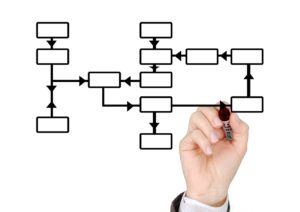Every great head coach has a game strategy. They sit down, watch film, and come up with the path to success for their team. Sales leaders often take the same approach. They look at what has worked or not worked for their teams in the past, examine where they want to get to and develop a plan on how to get there. Like head coaches, sales team leaders are often judged on the success of these plans and how well their team can accomplish them. Therefore, having a great sales engagement plan is essential to your team’s success.
What is a Sales Engagement Plan?
If you are unfamiliar with what a sales engagement plan is, here is a brief overview. These plans stem from how your team wants to engage with prospects throughout the sales life cycle. From the moment you are given contact information or find a potential lead, you must actively engage with this person until you close the deal.
This process includes a whole array of ways to reach out. For example, these plans can include calls to the prospect, emails showing product features, reaching out on LinkedIn, even direct mail, and more. These different mediums used, or types of sales engagement activities, help connect the seller to the prospect. They are often built using sales engagement platforms, so everyone on a sales team can use the same uniform, scalable plans.
How to Create a Sales Plan?
While every sales engagement platform is different, there are a few general ideas to follow along, no matter the tool you use, to create a good sales engagement plan.
Identify the Steps in Your Sales Cycle
The first step would be to identify the steps in your sales cycle. This is where, as a team leader, you will pinpoint what steps each prospect takes from being found to closing a deal. Before you can set anything up, you must understand the sales cycle that you want prospects to take.
For example, you must think about the length of this cycle. If you are trying to close smaller deals on the first phone call, your sales engagement plan will look vastly different than one that nurtures prospects over the course of a year. You probably already have a good handle on what the stages in your sales pipeline are, but this is where you need to start thinking about a plan of action for each step.
Identify Your Target Audience
The next step would be to identify your target audience. This is something that business leaders know is important. However, I bet more than you think struggle with doing this well. Identifying your target audience is more than knowing just basic demographic information.
Creating the target persona includes everything from those demographic characteristics to what types of messaging they respond best to, what motivates them to act, what common interests they have, where they get their information, and what communication mediums they prefer. This can help determine what is most important at each stage of the sales cycle and sales engagement plan. If your target audience does not use email and is not very tech-savvy, it would be a waste to email them weekly with links, videos, and demos.

Identify Your Mediums
Once you identify your target audience, you can then pick the mediums you want to use throughout the plan. As just mentioned, the mediums used need to reflect what your target audience responds well too. Common mediums for plans include emails, texts, phone calls and social media. Plans also do not need to be limited to just one of these mediums. If you determine your target audience will respond well to an initial phone call then like to see your product visually, you may follow-up with an automated email.
Think About Timing
Another key part of these plans deals with the timing of them. Prospects, while they may respond better to emails than phone calls, would most likely not respond well to five emails a week. On the flip side, they may forget about you if you only contact them one a month. Finding which timing between contact points works best by using analytics is an essential part to finding that sweet spot between persistent and annoying.
Think About Automated Messaging
Once you know who you are targeting, how you are targeting them and when, you must figure out the finer details of the steps in the plan. One of these important steps is determining how much personalization you want in your messaging. Of course, having a personalized message to every prospect would stand out, but no one has the time for that.
By picking a sales engagement tool that allows you to use templated messaging for bulk campaigns as well as personalized messages for specific prospects, you can ensure you are able to hit both types of messaging as needed.
How Will You Gauge Performance?
Once your plan starts and prospects are contacted, lots of data comes rolling in. Everyone loves looking at data and using it to better your team. However, what data do you look at? Many team leads are sucked into vanity metrics that, while looking nice, do not actually help show how to improve your selling efforts.
Using metrics that matter can help develop actionable insights to help improve your team’s performance, such as looking at ratios for touches to conversations or touches to conversions. After all, the end goal is sales, so a boat load of rep activity doesn’t necessarily mean you’re going to hit revenue goals if they’re not effective and efficient.
Think About Future Changes
Going off these analytics, you must remember to make the changes that the data suggests. Making adjustments to make their team more efficient and effective is part of a sales leader’s job. It is not enough to look at some data. You must use it to suggest new changes, whether that is every month, quarter, year, or other timeframe that works best for your team.

What Is a Good Sales Engagement Plan Template?
To highlight how all this comes together, here is an example that considers everything needed to make a good plan.
To start, let us pretend we are targeting a group of young professionals that are very connected on social media, would much rather prefer to communicate on their phones rather than through email, and need to be reminded frequently about a new product or service.
Knowing this, you know who your target persona is, what mediums they respond well to and how often they should be contacted.
- The first initial contact could be a phone call.
- After this, you may want the seller to connect with them on LinkedIn the following day, then send a follow-up text two days later.
- Then you may wait a few days and call again, this time with a call script highlighting different product features.
- Then, you may send them a few texts over the next two weeks to stay top of mind.
Following a plan like this, you would keep the essential considerations in mind on reaching your target audience effectively. Next, you want to make sure you are tracking the performance of the plan. If you notice that after the second phone call, more than half of the prospects stop engaging, then you may consider changing the plan up after that step.
From here, you can keep tweaking the plan until you get it nailed down and closing a lot of deals!
Summary
Developing a good sales engagement plan is a key step towards closing deals. Finding a sales engagement tool that allows you to follow the steps above can help separate your sellers from the rest of the competition. Once you have this tool, you can start developing plans that help move prospects through the sales cycle and close more deals.
Category
Tags
Subscribe to Funnel Vision
Get the latest and greatest right in your inbox






